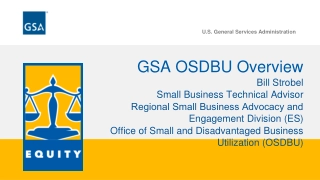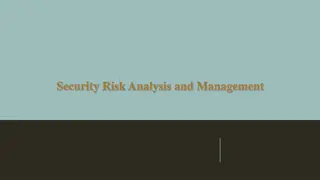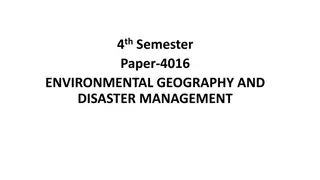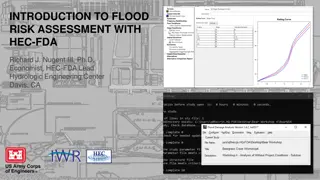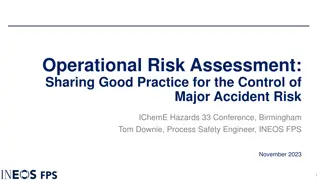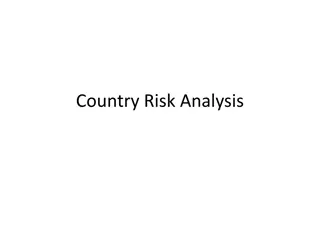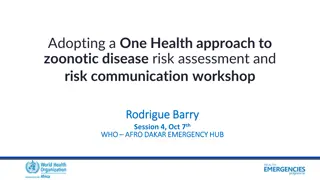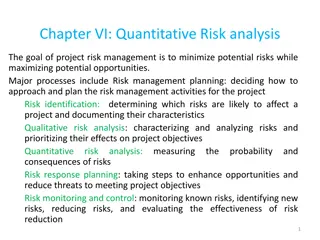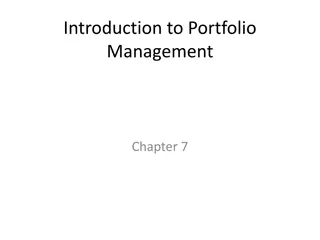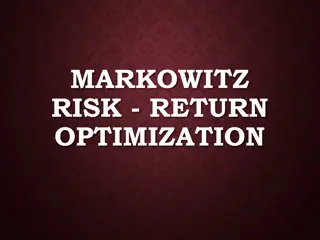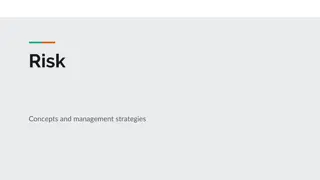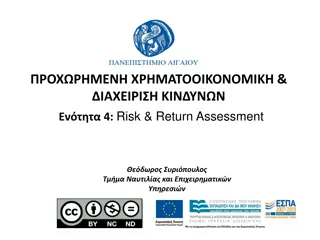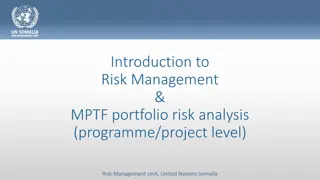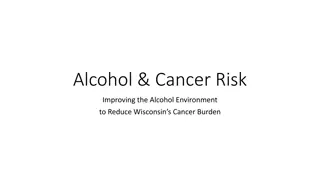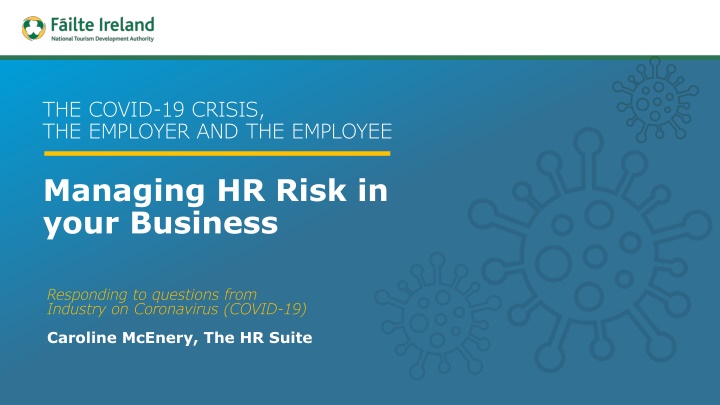
Managing HR Risk During COVID-19 Crisis for Employers and Employees
Learn how to manage HR risks during the COVID-19 crisis for employers and employees. Understand the impact on staff, proactive measures, and steps to take to ensure business survival. Stay informed, calm, and pragmatic to make quality decisions informed by factual data.
Download Presentation

Please find below an Image/Link to download the presentation.
The content on the website is provided AS IS for your information and personal use only. It may not be sold, licensed, or shared on other websites without obtaining consent from the author. If you encounter any issues during the download, it is possible that the publisher has removed the file from their server.
You are allowed to download the files provided on this website for personal or commercial use, subject to the condition that they are used lawfully. All files are the property of their respective owners.
The content on the website is provided AS IS for your information and personal use only. It may not be sold, licensed, or shared on other websites without obtaining consent from the author.
E N D
Presentation Transcript
THE COVID-19 CRISIS, THE EMPLOYER AND THE EMPLOYEE Managing HR Risk in your Business Responding to questions from Industry on Coronavirus (COVID-19) Caroline McEnery, The HR Suite
MANAGING RISK IN YOUR BUSINESS RIGHT NOW What to do? What to do? Action vs Impact REMAIN CALM REMAIN PROACTIVE REMAIN PRAGMATIC Positive impact on staff and guests You can take action NOW to assist managing your survival Ensures quality decision making, informed by facts and real business data
MANAGING RISK IN YOUR BUSINESS RIGHT NOW Continue to risk assess within the business Continue to risk assess within the business Staff should stay at home if: They have travelled to affected areas Have symptoms must contact GP immediately Identify who are your vulnerable employees: Pregnant workers OR individuals with chronic underlying conditions Family members of staff who are elderly and or who have family members with chronic illnesses, young or old Other risks: Measures in place for social distancing, hand/respiratory hygiene Consider your cashflow employee payments Adhere to HSE and WHO Guidelines
THE COVID-19 CRISIS, THE EMPLOYER AND THE EMPLOYEE Managing Changes to Working Hours Responding to questions from Industry on Coronavirus (COVID-19)
MANAGING CHANGES TO WORKING HOURS Short-time Occurs if you don t have full-time work for staff Need to reduce hours to less than half or less than 3 days Available for you to facilitate job- sharing or to reduce working hours for employees while still maintaining cover for key areas Definition Qualifying Criteria Employer Actions Employee Actions
MANAGING CHANGES TO WORKING HOURS Lay-off Requires you to have no work available for a specific period of time E.g. at the moment you may not have work for the next 2 weeks and will reassess the situation then Definition Qualifying Criteria Employer Actions Employee Actions
MANAGING CHANGES TO WORKING HOURS Redundancy Occurs when you have no work for the employee for the foreseeable future Definition Qualifying Criteria Employer Actions The position no longer exists Employee Actions
MANAGING CHANGES TO WORKING HOURS Parental Leave Staff can stay at home to mind the designated child the parental leave applies to Definition Qualifying Criteria Qualifying criteria child needs to be less than 12 years old Employer Actions Employee Actions Available for up to 22 weeks
MANAGING CHANGES TO WORKING HOURS Parent s Leave Entitlement Available for children born since 1st November 2019 Definition Qualifying Criteria Must be taken in the first year of a child s life Employer Actions Employee Actions Max of 2 weeks leave and employee receives 245 per week
Additional Resources Additional Resources gov.ie & welfare.ie gov.ie & welfare.ie https://www.citizensinformation.ie/en/employment/unemployment_and_red undancy/redundancy/lay_off_short_time_working_and_redundancy.html https://www.failteireland.ie/FailteIreland/media/WebsiteStructure/Docum ents/COVID-19/Accessing-Government-Funds-and-Supports.pdf
THE COVID-19 CRISIS, THE EMPLOYER AND THE EMPLOYEE What happens if the workplace closes? Responding to questions from Industry on Coronavirus (COVID-19)
MANAGING CHANGES TO WORKING HOURS Contractual Lay-off Contractual obligation outlined in the employee s Contract of Employment Definition Qualifying Criteria Can lay-off the employee without pay and they get paid by the government Employer Actions Employee Actions
MANAGING CHANGES TO WORKING HOURS Redundancy Occurs when you have no work for the employee for the foreseeable future Legal termination of an employees employment The position is made redundant not the person Must be done on objective grounds e.g. last in first out, closing of a specific department, etc. Definition Qualifying Criteria Employer Actions Employee Actions
THE COVID-19 CRISIS, THE EMPLOYER AND THE EMPLOYEE Employer and Employee Obligations during the Coronavirus Crisis Responding to questions from Industry on Coronavirus (COVID-19)
EMPLOYER AND EMPLOYEE OBLIGATIONS Risk assess Review workplace hygiene Confidentiality is very important Ensure clear policies and rules You have a duty of care - social distancing Reduce customer contact (e.g. enforce contactless payment where practical) Close as you need to in line with risk management & government instructions Provide a safe Provide a safe and healthy and healthy place of work place of work
EMPLOYER AND EMPLOYEE OBLIGATIONS Communicate Communicate with staff with staff Distribute information to employees outlining the steps which are being taken by the company to ensure the health and safety of employees and customers Ensure you have an emergency text service in place to issue updates to employees in relation to the virus and the business
THE COVID-19 CRISIS, THE EMPLOYER AND THE EMPLOYEE What to do if an employee is suspected or diagnosed with the Coronavirus Responding to questions from Industry on Coronavirus (COVID-19)
EMPLOYER AND EMPLOYEE OBLIGATIONS Employees to be made aware of their obligations if they are unwell or have a suspected case Stay at home and contact their GP Follow instruction of the medical professionals Inform employer if they spent anytime in the affected countries Inform employer if they were in contact with anyone who has contracted the virus Ensure adequate hygiene in the workplace Follow employer guidance e.g. social distancing Employee Employee Responsibilities Responsibilities
EMPLOYER AND EMPLOYEE OBLIGATIONS Illness benefit for COVID 19 absences Illness benefit for COVID 19 absences Medically certified (employee or self-employed) Self-isolate and phone GP Public Health will contact you if you are suspected, diagnosed or designated as close contact Qualifying Qualifying Criteria Criteria 30% Rates of Rates of Payment Payment 15% Payment is 305 for up to 2 weeks 10% 15% 15% Call 1890 800 024 to request form Complete form and post to DEASP via PO BOX 1650 How to Apply How to Apply
EMPLOYER AND EMPLOYEE OBLIGATIONS GDPR GDPR Employers have an obligation to ensure that the privacy of the individuals personal data related to their health is kept secure

